Spring Exhibitions in Rome
As well as the inexhaustible and glorious permanent collections of the Caput Mundi, so many that world-class museums—Palazzo Altemps, Terme di Diocleziano, Palazzo Corsini, Centrale Montemartini spring to mind just for starters—are under-visited and can be viewed in peace whatever time of year one visits, there are a flurry of intriguing exhibitions in town this Spring. Here are some I’ve visited in the last couple of weeks, and some thoughts.
Caravaggio 2025, Palazzo Barberini, until 6 July 2025
The mega-blockbuster Rome show this year, about which I’ll be sending a more detailed post in the next few days: twenty-four paintings by Michelangelo Merisi da Caravaggio, the tenebrous bad boy of the Roman Baroque universally known like all great stars—Leonardo, Prince, Beyoncé, Raphael—by just one name. The show is a relatively small (never a bad thing in my book) but glorious chronological cavalcade of A-list paintings by Caravaggio including the very recently identified Ecce Homo, on loan from the Prado.
The first version of the Conversion of St Paul painted for the Cerasi Chapel at Santa Maria del Popolo and usually in a private Roman collection (this is, I think, the second time I’ve seen it) is here and US loans include the Cardsharps from the Kimbell Museum in Fort Worth, the Martha and Mary from Detroit, and the exquisite John the Baptist from Kansas City. King Charles III has sent over Caravaggio’s earliest known Roman work, the Boy Peeling Fruit, from London, and the Thyssen-Bornemisza have ceded their glorious St Catherine of Alexandria. All in all a spectacular battery of beauty, do go and see it if you can!
Il Tempo del Futurismo (The Age of Futurism), La Galleria Nazionale, extended until 27 April 2025
This much-criticised (and enormous) exhibition was the brain-child, per dire, of the former Minister of Culture in the Meloni government, Gennaro Sangiuliano. Now disgraced following a rather sordid affair involving a social media influencer and an inappropriate and lucrative “consultancy” gig, Sangiuliano was keen a blockbuster exhibition would mitigate the cultural hegemony of the Left. And what the Right had—well, sort of, though it is as they say complicated—was Futurism. Criticism has been levelled at the lack of academic rigour behind the curation which has been accused of veering towards the superficial and slap-dash; Instagram-friendly shiny bikes and cars and a sea-plane, critics say, win over cultural context.
The Right wanted their exhibition but addressing complex questions regarding the Movement’s association (and differences) with the Regime is avoided; war, one of the fixations shared by both Futurists and the Fascists, is notable by its absence. Aereopittura is present, war is not. Bertelli’s head of Mussolini in rotation is a rare nod to Fascist rule. Such lacunae are deafening but that said there are 350 pieces on show, including 27 pieces by Giacomo Balla and 7 by Boccioni from the Galleria Nazionale’s collection several of which are usually unseen in the stores which alone make it worth a visit. Plus the permanent collection is always worth a visit, and there’s a super café so why not take a stroll through the Villa Borghese and have a look?
I Farnesi nella Roma del Cinquecento (The Farnese in Sixteenth Century Rome), Musei Capitolini, until 18 May 2025
The Villa Caffarelli (entered round the side of the Palazzo dei Conservatori where the fabulous, vast, and extravagantly extra fibreglass reconstruction of the Colossus of Constantine has been patiently guarding a useful public convenience since 2023) is home to this exhibition looking at the far-reaching cultural impact of the Farnese family in Rome of the cinquecento.
The Farnese produced a pope, the ultimate achievement for grand families, in 1534. In public Pope Paul III addressed the threat posed by the Protestant Reformation, inaugurating the Council of Trent, in private he was a spectacularly successful nepotist and the embodiment of much that had so angered Luther.
During Paul III’s reign building work boomed: the Capitoline Hill was remodelled by Michelangelo, works progressed at St Peter’s, and the Palazzo Farnese was begun. Paul’s grandson Cardinal Alessandro oversaw much of it, and vehemently pre-Christian statuary was taken from the Baths of Caracalla and the Palatine Hill to decorate a palace fit for a Christian emperor. The Gran Cardinale had a particular fondness for Venuses. Martin Luther, one can assume, would have been incandescent

This is a really good, thoughtful exhibition with some world class pieces, especially on loan from the Farnese collections at the Archeological Museum and the Museum of Capodimonte in Naples.
Salvador Dalì: Tra Arte e Mito (Between Art and Myth), Museo della Fanteria, until 27 July. (NB: no information panels are in English)
In his 1944 essay “Benefit of the Clergy”, written following the publication of Dalì’s autobiography, George Orwell details with distaste a number of the perverse and violent proclivities which Dalì shared with enthusiasm. Orwell describes the book as “a striptease act conducted in pink limelight” and queries the veracity of some of the more outré revelations—taking a bite from a wounded bat covered in ants aged five; kicking his infant sister in the head aged six; throwing a childhood friend from a bridge. As Orwell says “Which of them are true and which are imaginary hardly matters: the point is that this is the kind of thing that Dali would have liked to do.” A self-professed narcissist (at a time in which the term wasn’t ubiquitous), Dalì’s need to shock was boundless. As Orwell—simultaneously disgusted and admiring—eloquently outlines “He is an exhibitionist and a careerist, but he is not a fraud. He has fifty times more talent than most of the people who would denounce his morals and jeer at his paintings.”
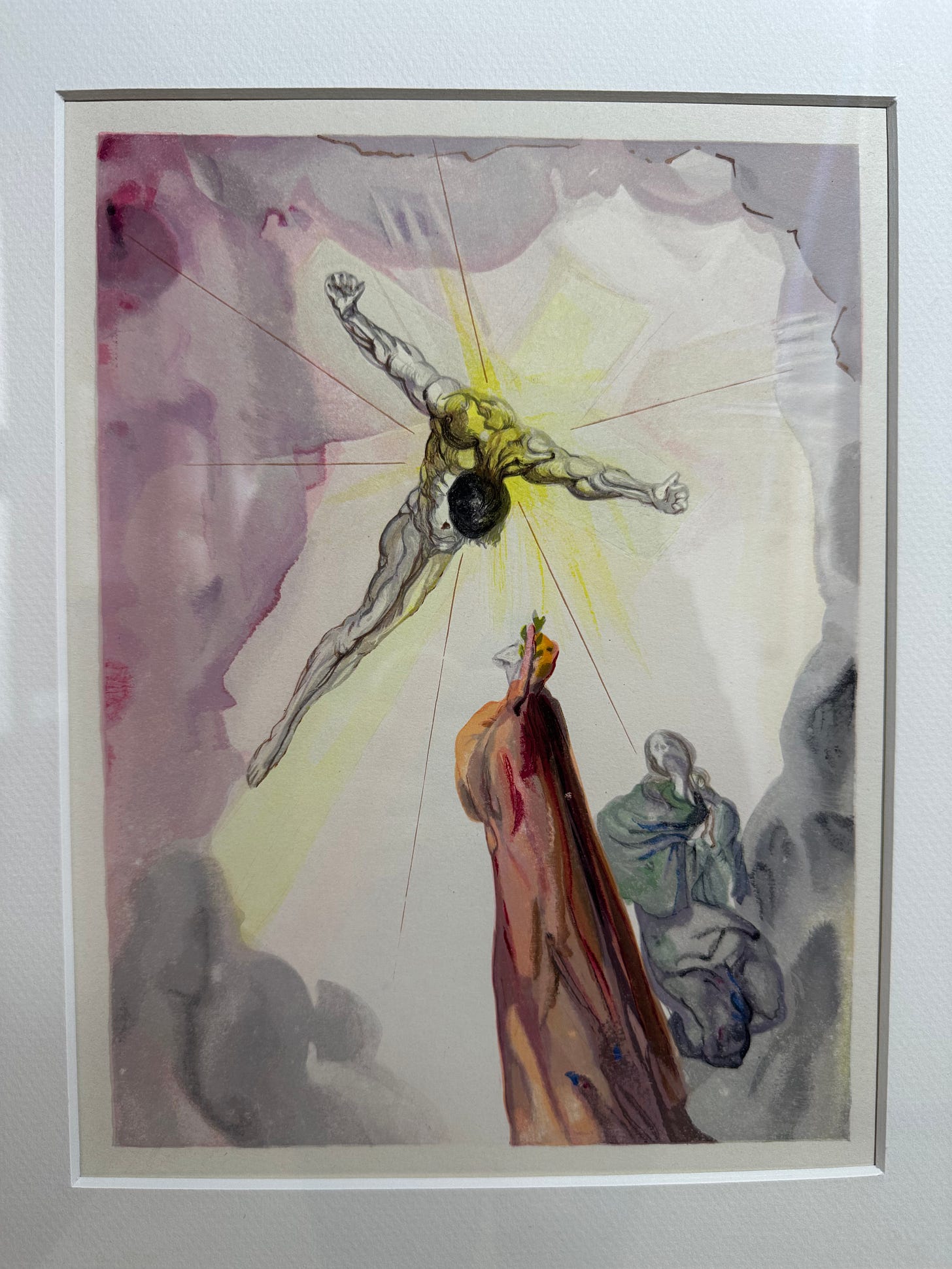
It is, I’ve always thought, astonishing how successfully Dalì married an unabashed youthful penchant for necrophilia with such massive and sustained mega-popularity. His long life and extraordinarily prolific career is wildly eclectic, and his genius for marketing means his oeuvre runs from putrefying hacked up donkey corpses for the Surrealist movie Le Chien Andalou to the Chupa Chups logo. Quite the gamut.
The maestro’s marketing genius was highly canny, and much of his vast output was in the form of multiple reproductions (which is why Dalì exhibitions of varying degrees of value are to be found in every city almost all of the time). One such example was, I thought, the most interesting aspect of this exhibition of the rather tired title.
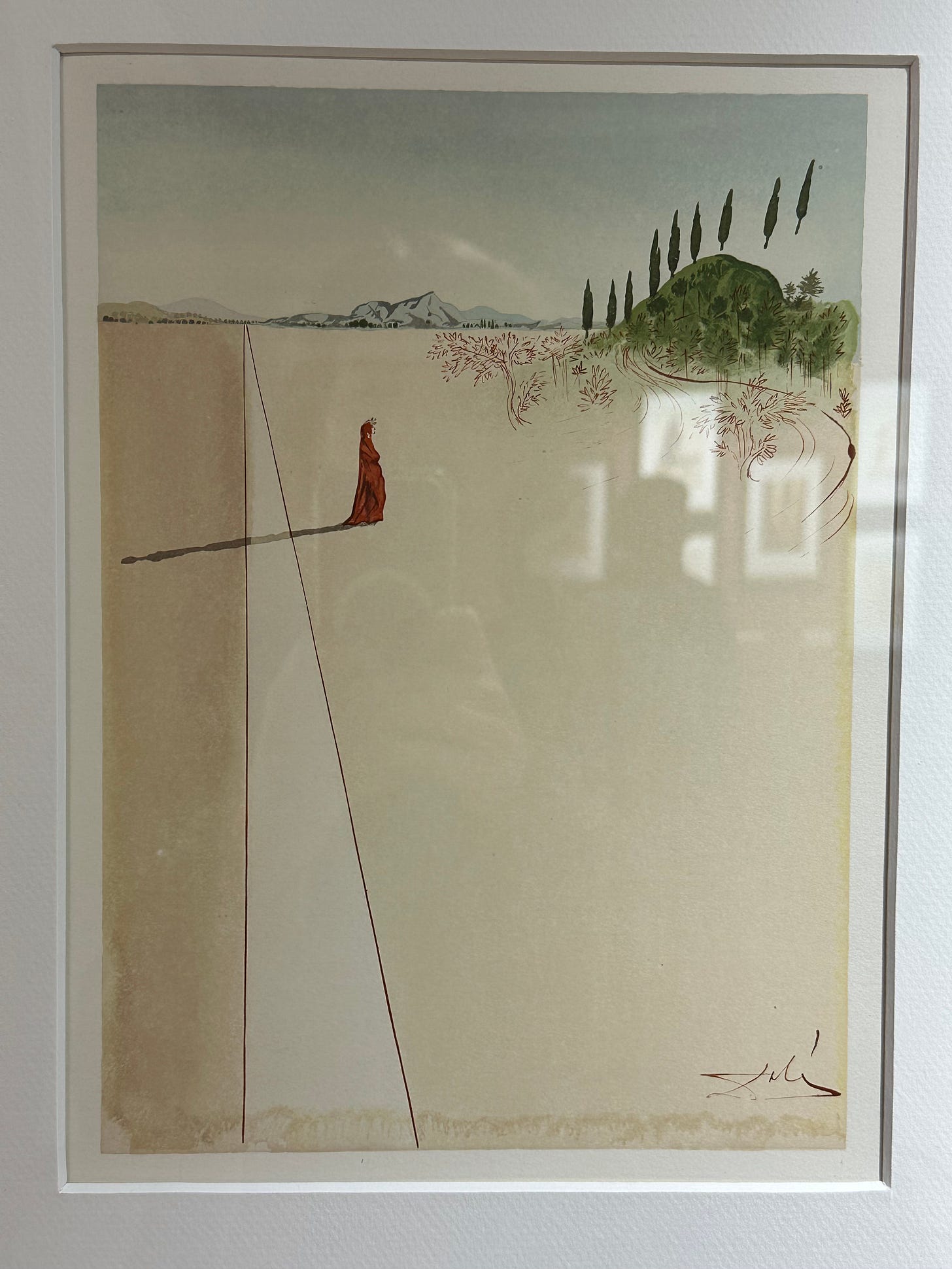
The star of the show is a series of prints of Dalì’s illustrations of the Divine Comedy. In 1950, the Italian government commissioned Dalì to illustrate the poem in preparation for the seven hundredth anniversary of Dante’s birth in 1965. Amongst other criticisms the choice of a non-Italian artist caused much furore and the commission was revoked. Limited runs of extremely high quality prints were made and the images are exquisite. Dream-like, disconcerting, and of extraordinary elegance. Prints of Dali’s illustrations of Horace Walpole’s Gothic novel, The Castle of Otranto are also on display. Interesting.
Picasso Lo Straniero (Picasso the Foreigner), Museo del Corso, until 29 June
The newly reopened Museo del Corso is home to an exhibition focussing on Picasso as an immigrant to France, a country in which he lived for most of his life and which never granted him citizenship. When he first arrived in Paris from Andalucia as a nineteen year old, speaking not a word of French, xenophobia and suspicion abounded. In 1914 seven hundred of his early Cubist paintings in the collection of the German-born Jewish gallerist Daniel-Henry Kahnweiler were confiscated in a wave of indiscriminate Germanophobia. Anxiety for the “purity of the nation” saw Cubism as a treacherous cancer attacking the moral and aesthetic state of France.
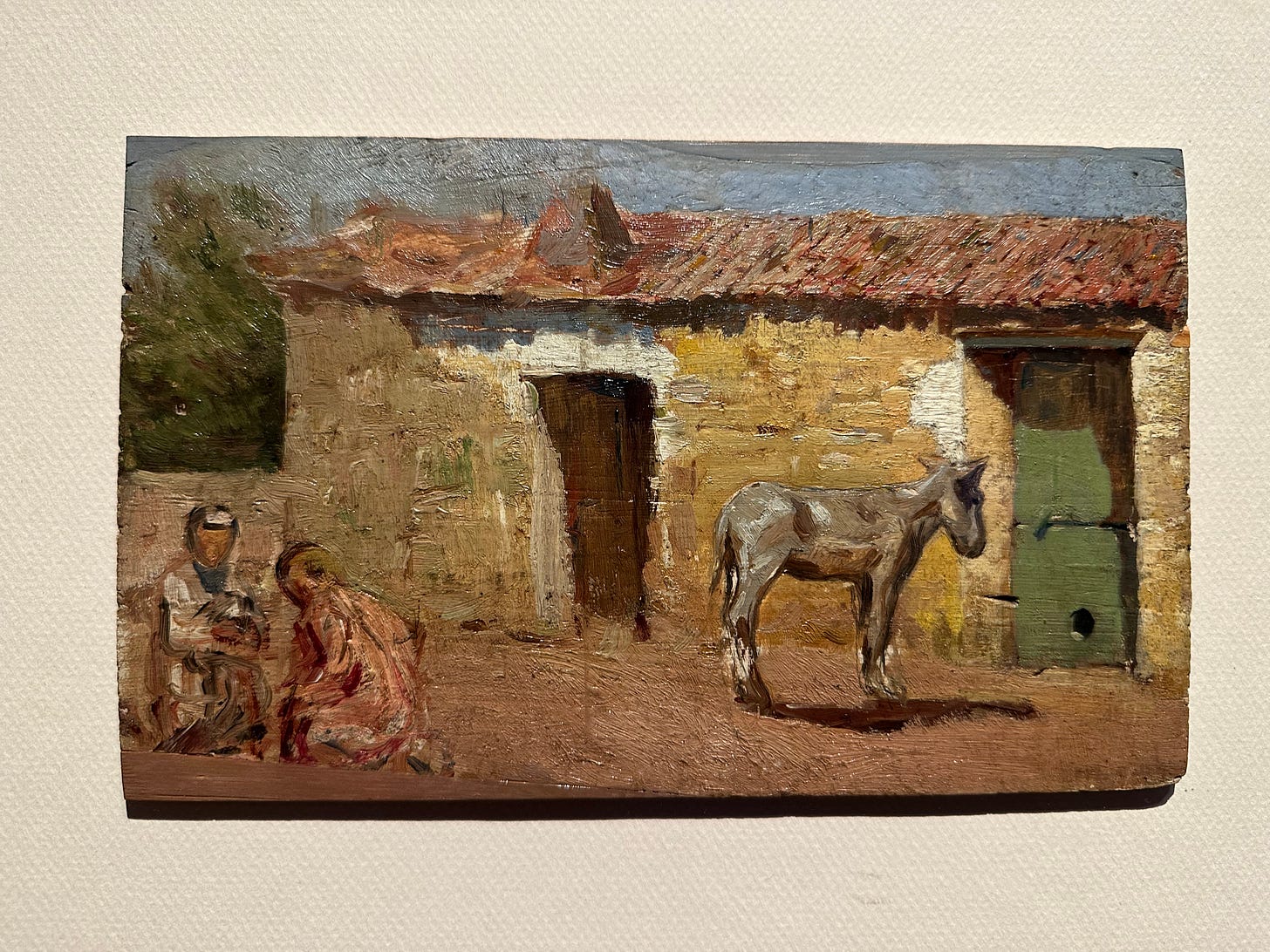
In 1917 Picasso left the tensions of wartime France when he was invited by Diaghilev to Rome. Here he worked on designs for the sets and costumes of Parade at a studio on via Margutta, and while in Rome he visited Pompeii, Naples and the Amalfi Coast. As well as over 100 works—drawings, paintings, sculptures—by Picasso, mostly on loan from the Musée National Picasso-Paris, there are some super photos on display as well as a costume, the Pink Horse from Parade.
Immediately after the outbreak of war, as a target in Franco’s Spain and having been declared a propagator of “degenerate” art by Nazi Germany, Picasso sought French citizenship. His request was rejected with a venomous report accusing him of being a security threat to France, apparently based largely on a xenophobic police file from his first arrival in Paris in 1901, aged nineteen, which considered him an anarchist. He lived in France for the rest of his life, a perpetual foreigner. Well worth a visit.
Munch: Il Grido Interiore (The Inner Scream), Palazzo Bonaparte, until 2 June
The Munch Museum in Oslo has lent over a hundred pieces—paintings, lithographs and woodcuts; but also notebooks, film and photographs—for this Rome leg of a show which first opened in Milan last autumn. The most famous Munch of them all is present in the form of a lithograph but there is much here that was, at least to me, entirely unfamiliar and wildly interesting.
A youthful notebook with a copy of Raphael’s self-portrait in the Uffizi (know to the teenage Munch in reproduction) is moving, its sweet earnestness somehow giving a depth to the melancholic and ever-present themes of death. Tuberculosis was the shadow looming over Munch’s family, and the cause of his mother’s death when he was a child. Munch himself was plagued by lung disorders, alcoholism, and depression throughout his life.
There is also an Italian angle: Munch spent a month in Rome in 1927 and painted his uncle’s tomb at the Non-Catholic Cemetery at Testaccio.
I shall draw a veil over the kaleidoscopically mirrored “immersive” space where one is encouraged to post selfies on social media towards the end of the show because I’m a grumpy old purist. Despite that well worth a visit.


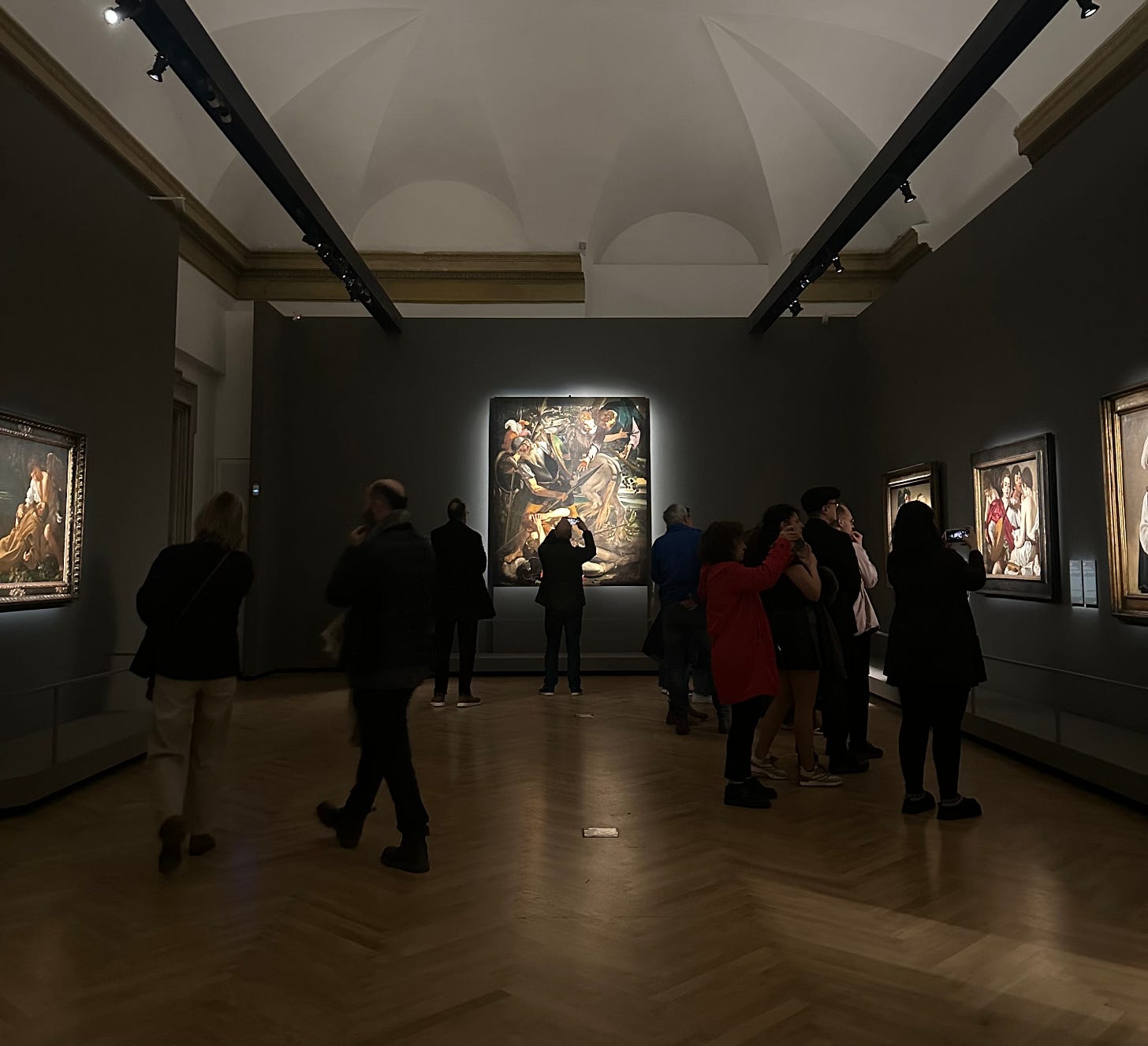
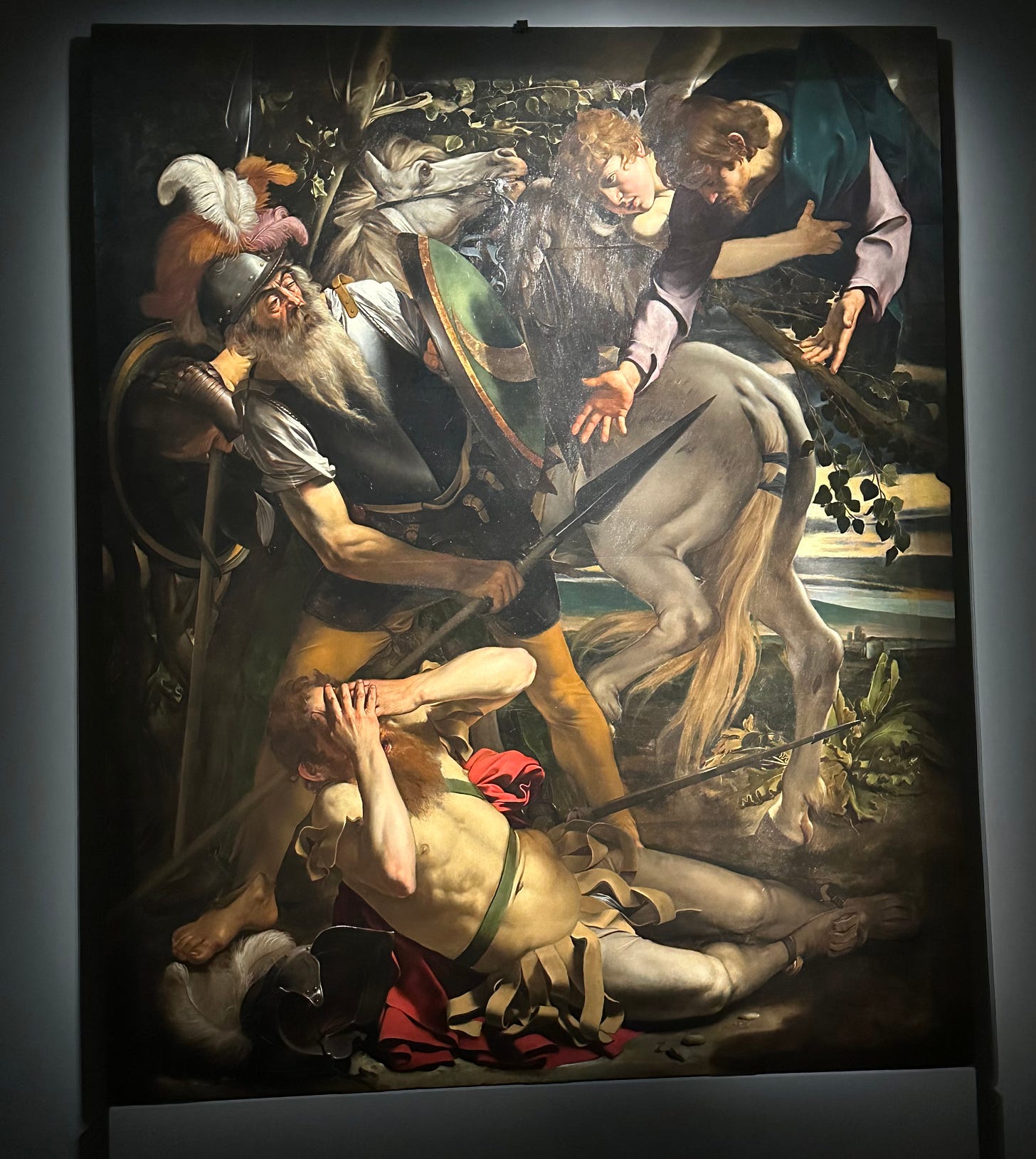
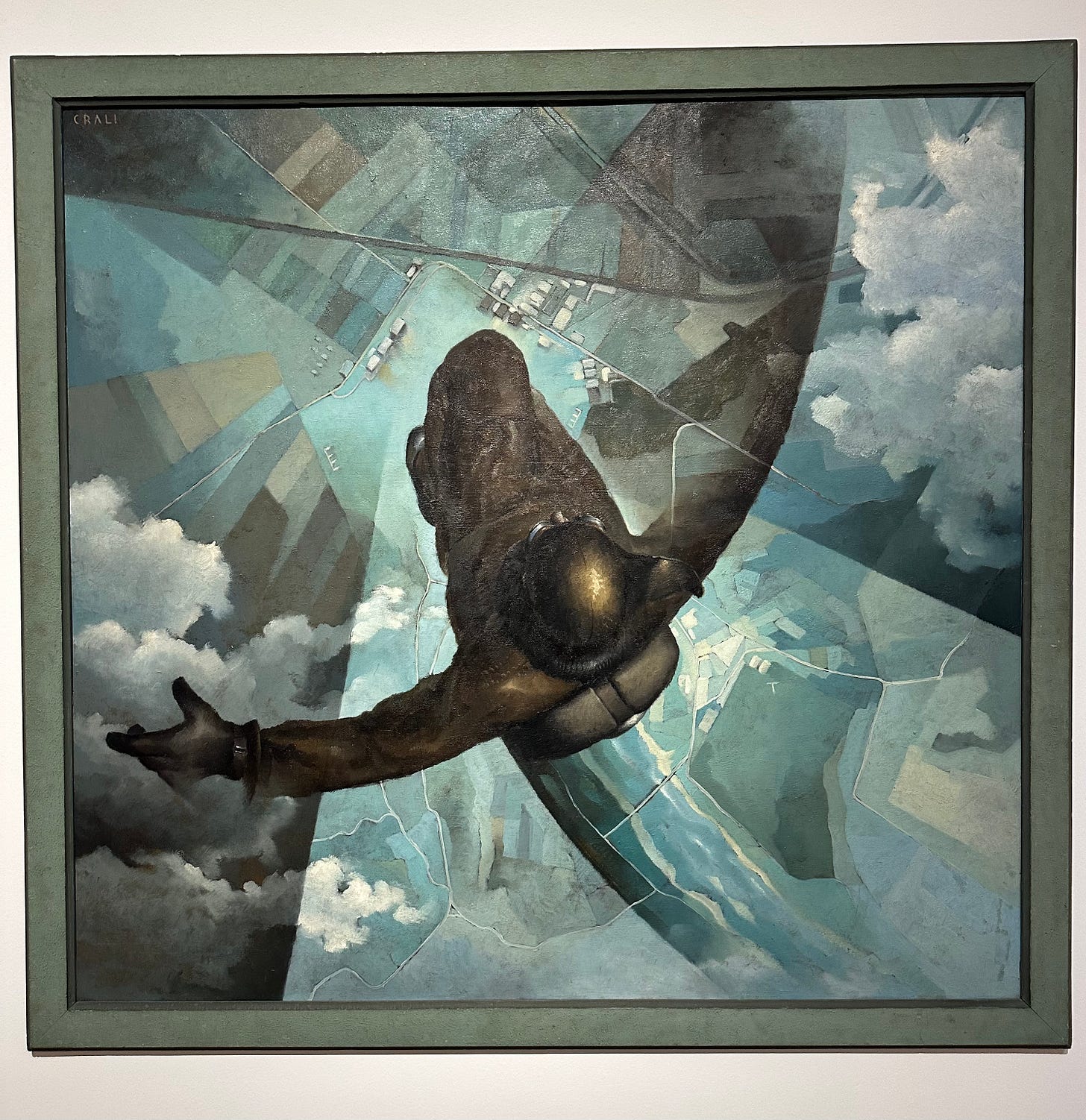
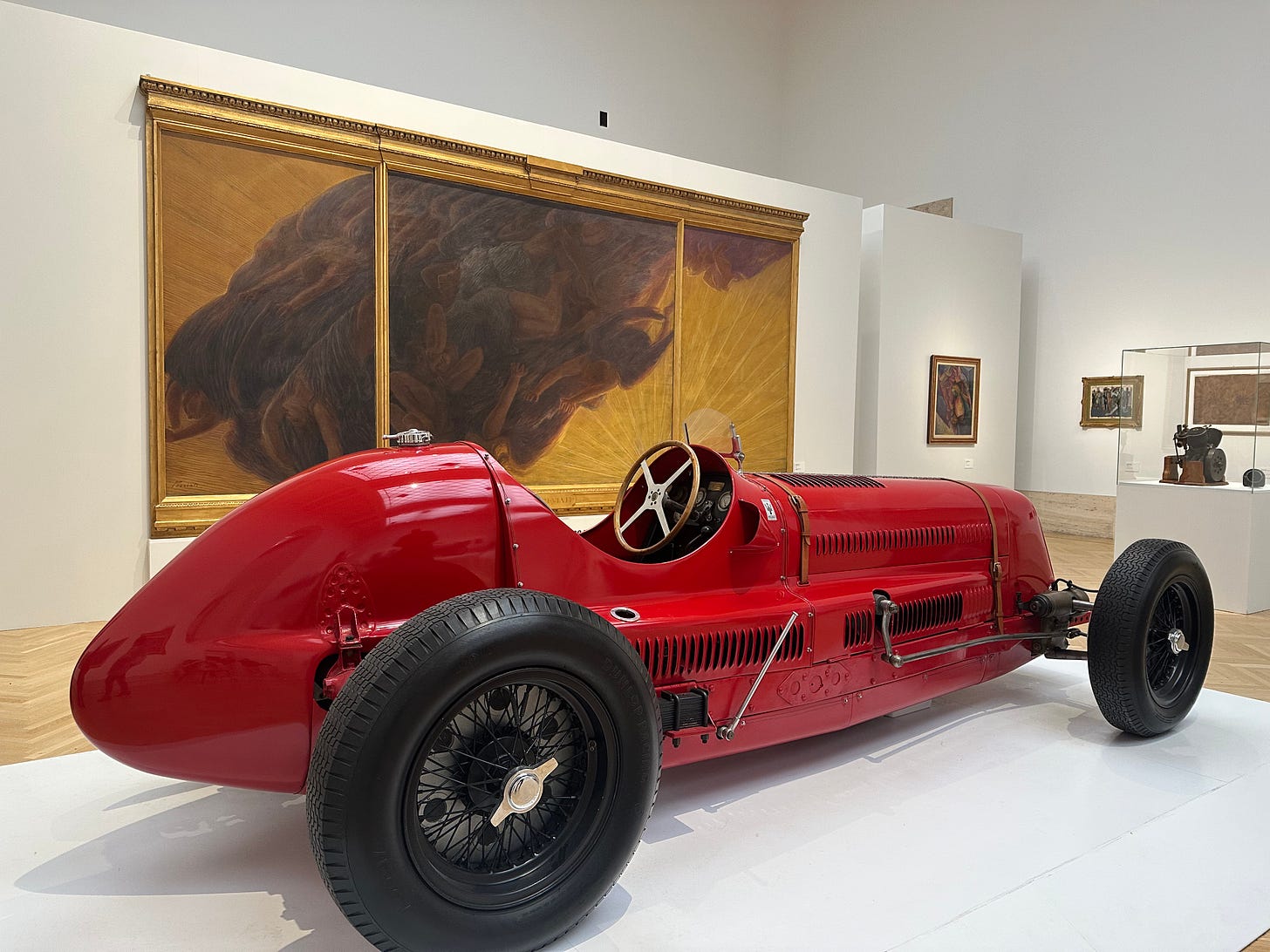

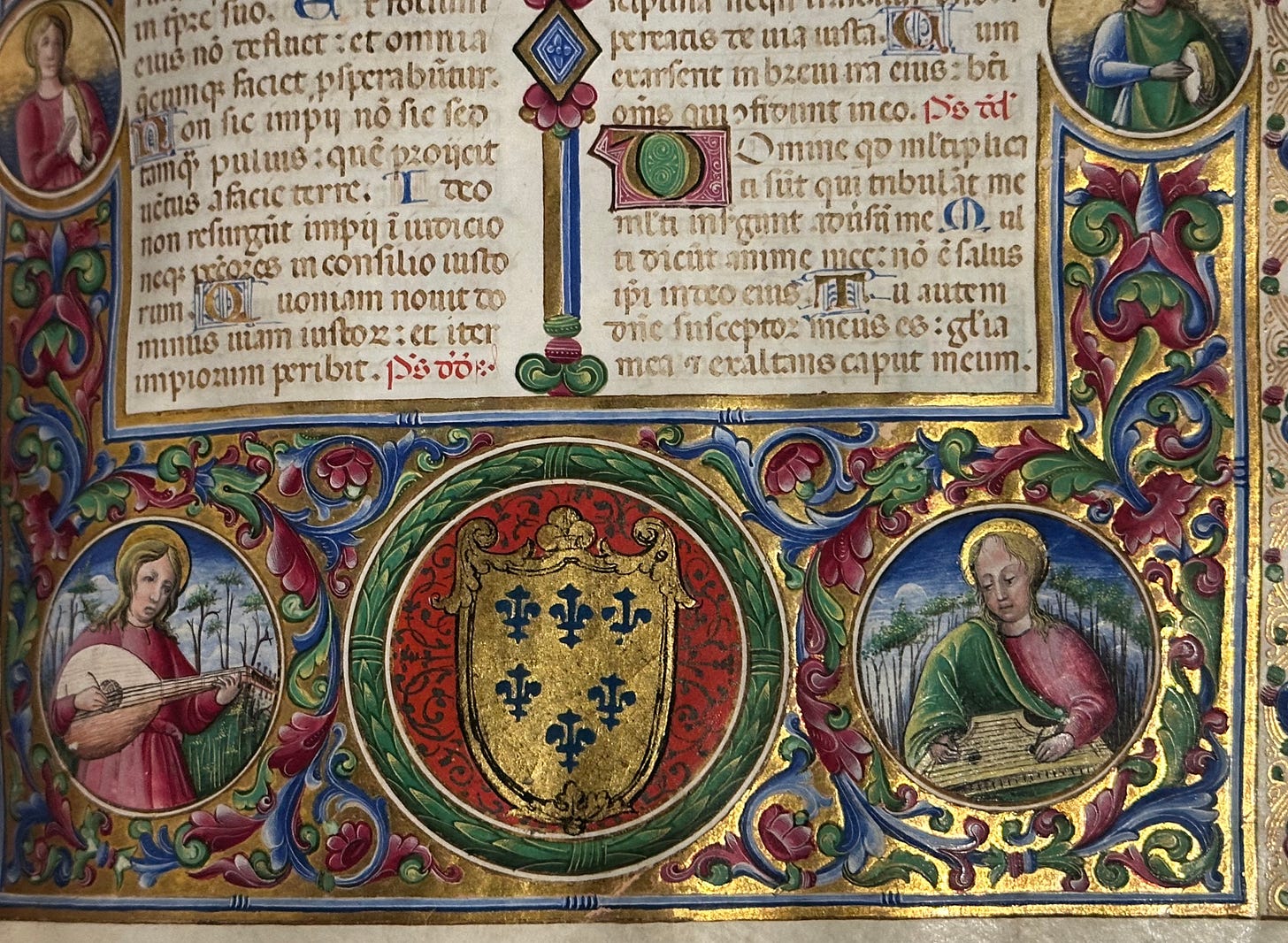
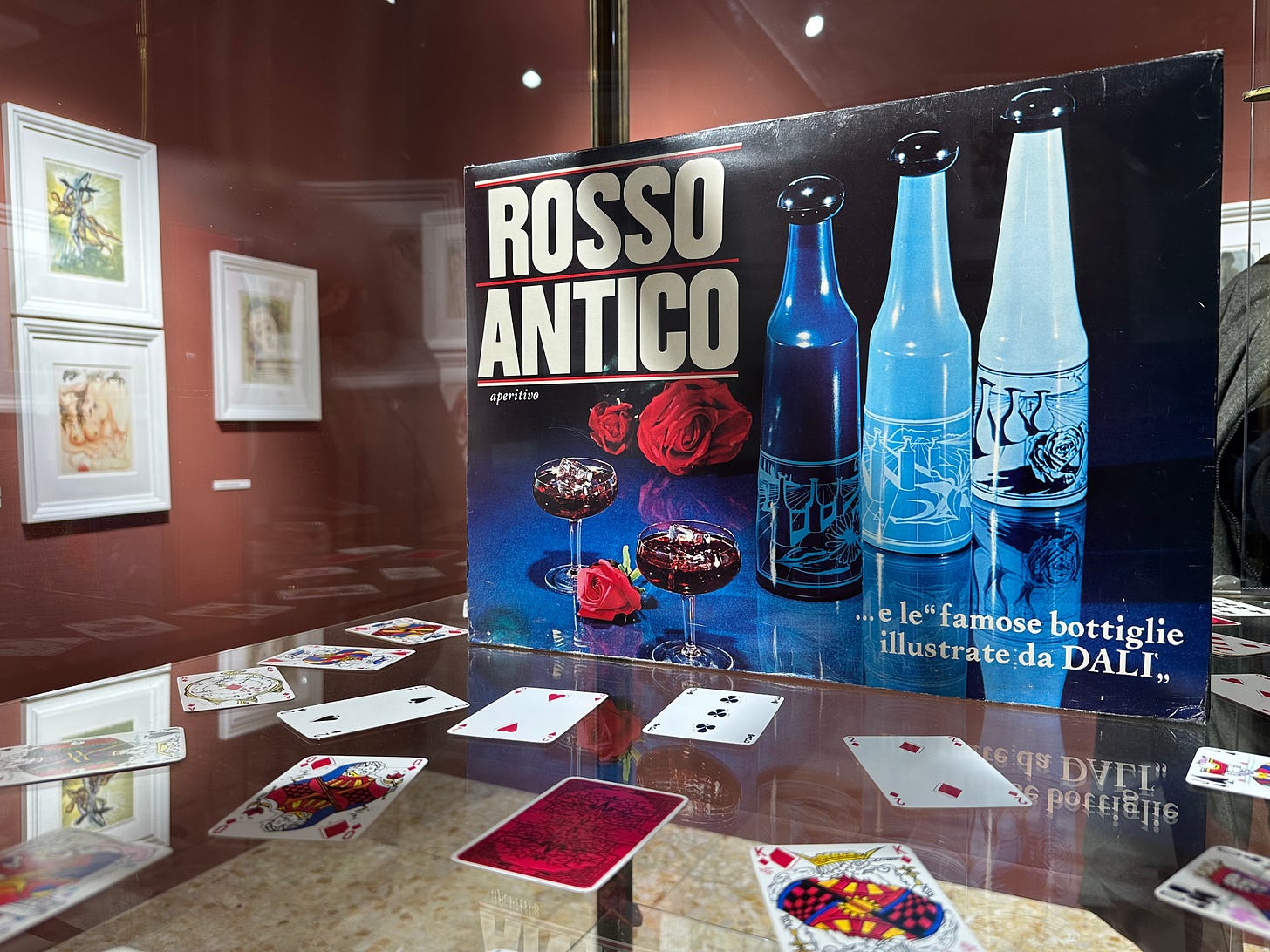
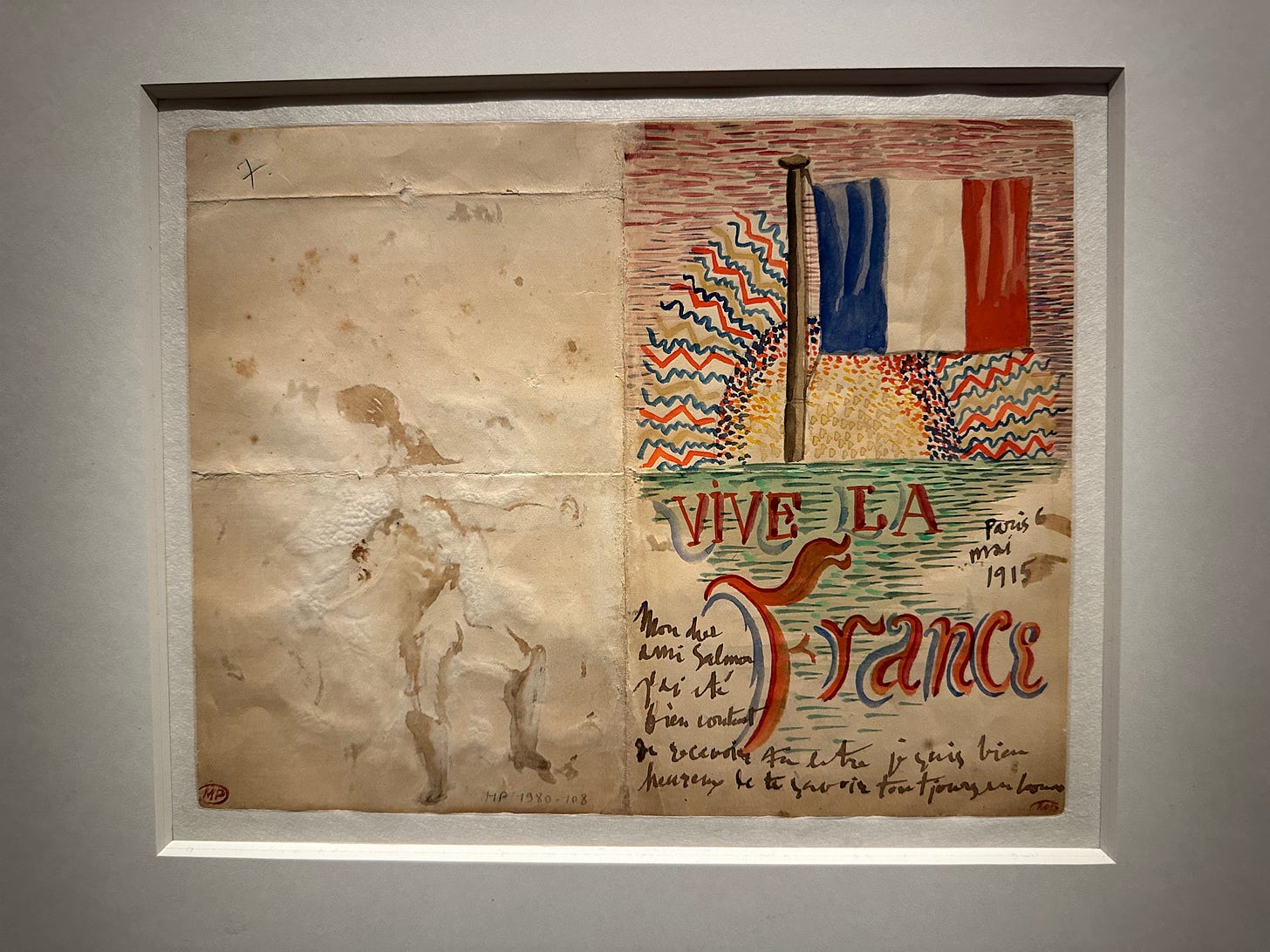
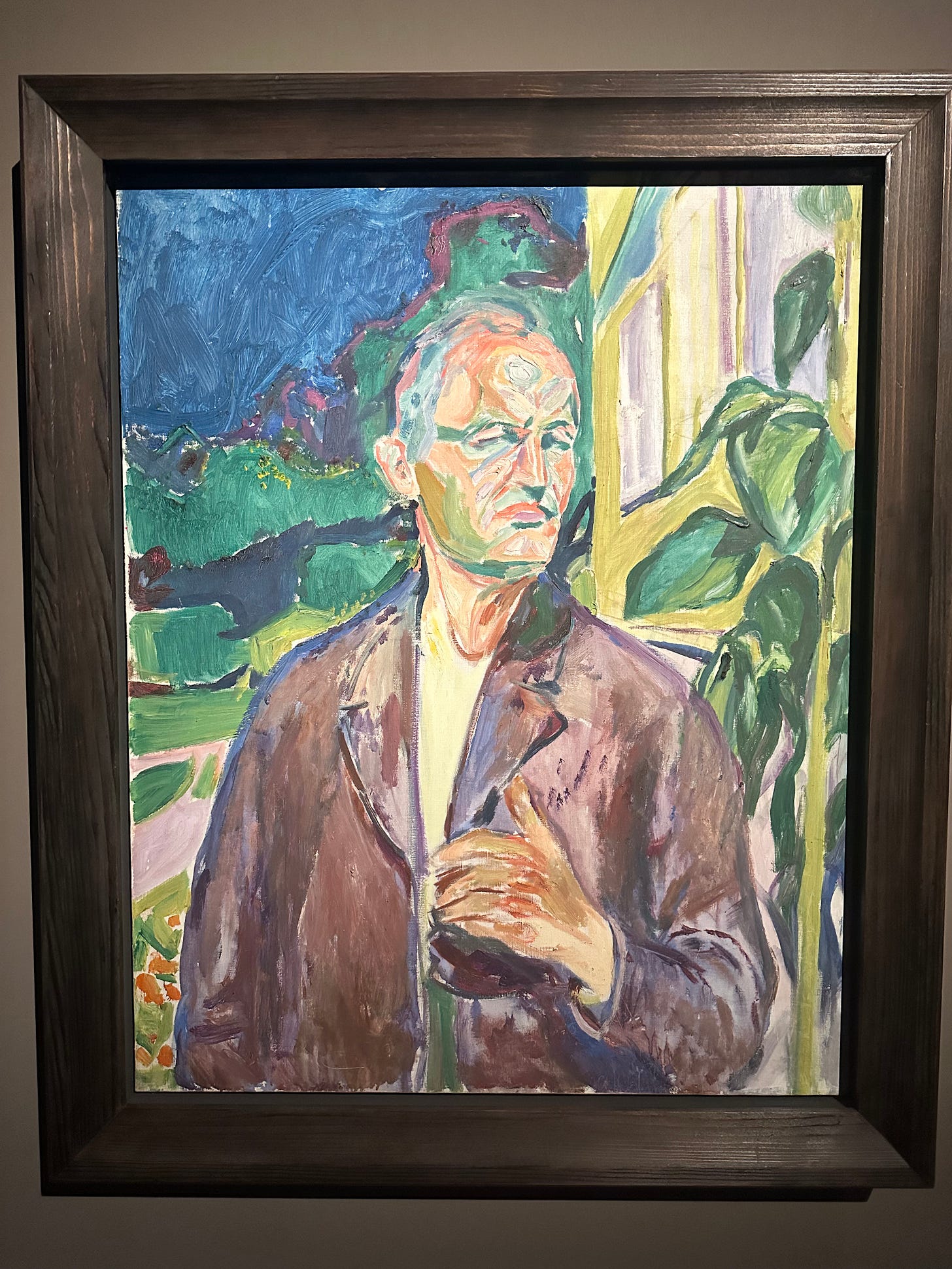
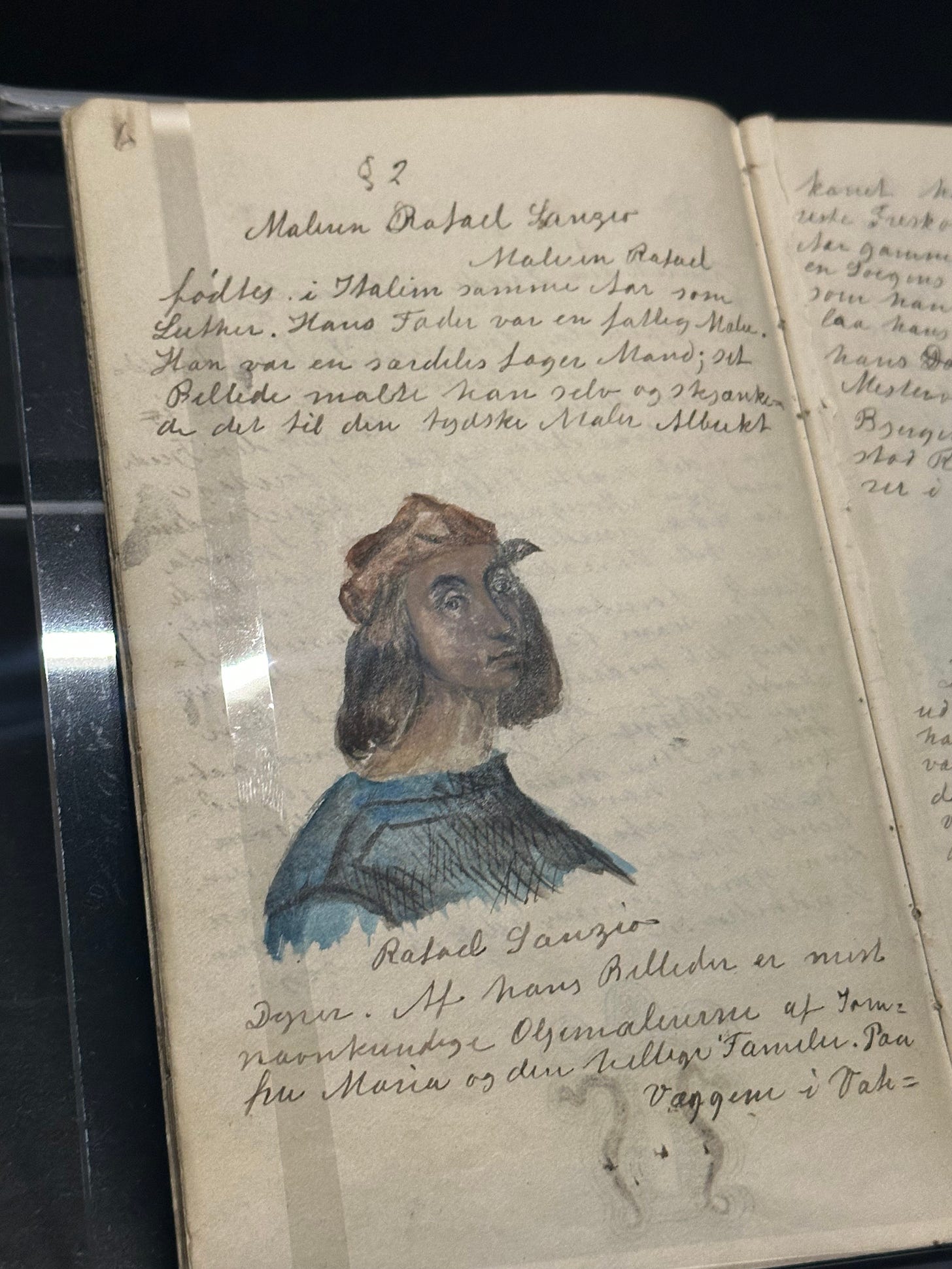
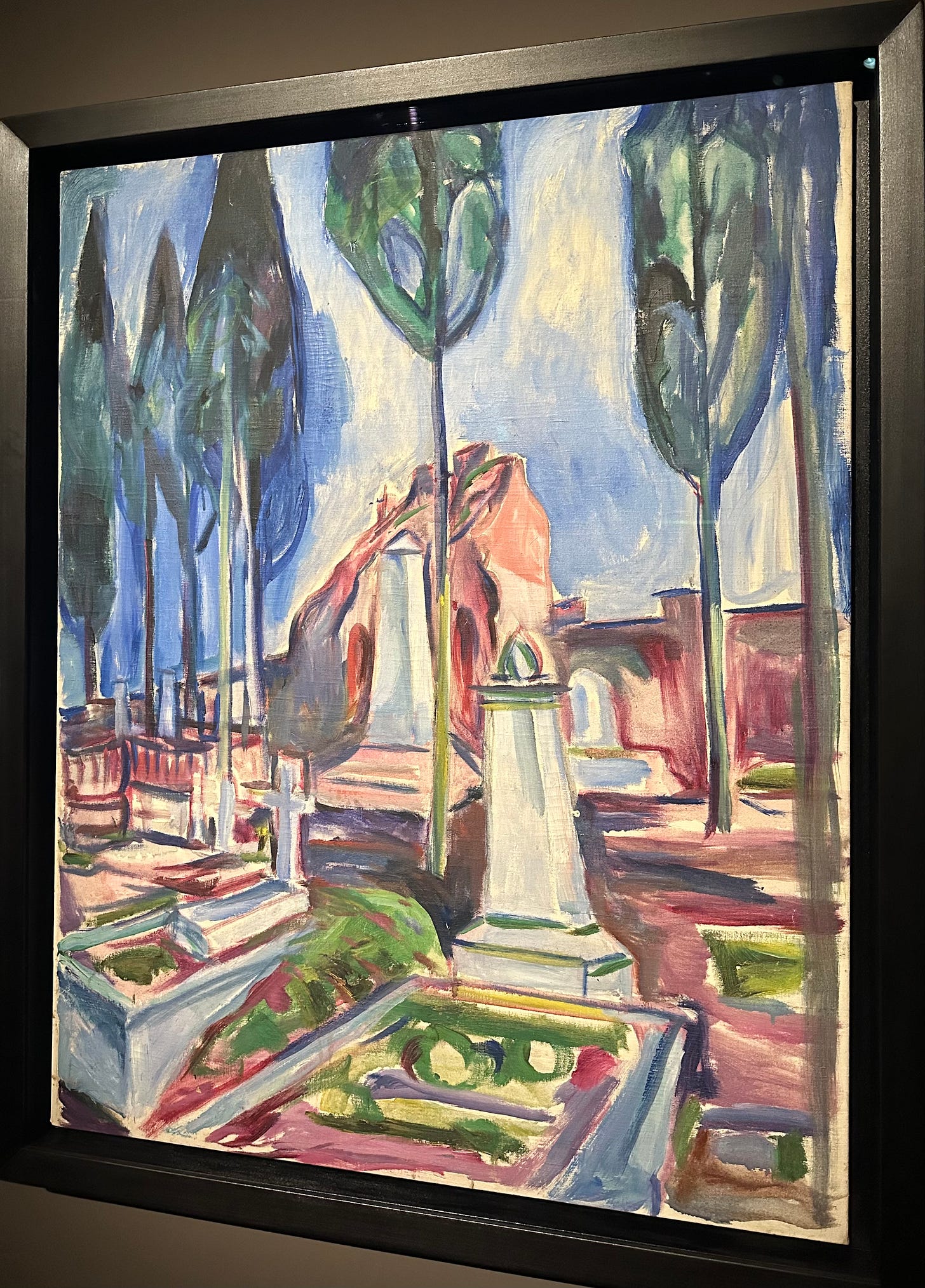
What a fantastic lineup of exhibitions. You are so fortunate!
What a splendid romp across so many exhibitions! Talk about a feast for the senses 🤩 And yay! Happy to hear KC’s Saint Jerome is featuring in the Caravaggio exhibition! 🙌